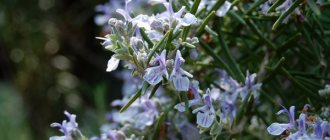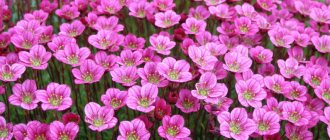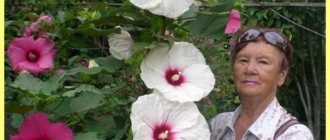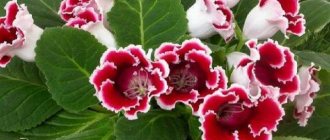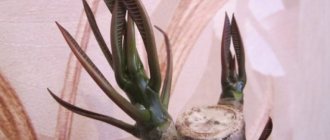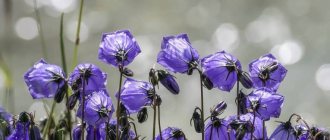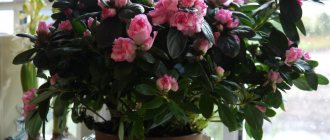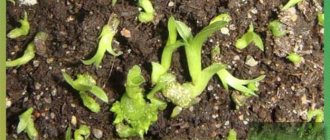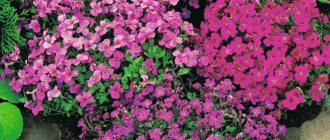Ginkgo biloba is one of the oldest plants on earth, a living fossil that was seen by Mesozoic dinosaurs. Its natural habitat is mainly China, with the exception of the most arid regions with a harsh continental climate. Currently, the tree is grown in various parts of the world with mild weather conditions. Among other things, ginkgo is suitable for growing at home, although growing it at home in the middle zone is not entirely easy, since it requires proper shaping. But for lovers of exotics and natural rarities, such plants invariably arouse increased interest, and many of them try to grow a “dinosaur tree” not only indoors, but also in their garden plots.
Places of growth
Currently, natural thickets of ginkgo can be found infrequently and in small areas. First of all, it is a tiny habitat in eastern China. It is here that you can meet individual representatives of the species, whose age exceeds a thousand years. Researchers claim that there are also 2-thousand-year-old specimens. They grow in mixed deciduous and coniferous forests, where they rarely form homogeneous thickets. From China, the seeds of the tree were brought to Japan, where it took root well, and from there it came to Europe and further around the world. In many countries it is grown as an ornamental plant, but most of all it is famous, of course, for its medicinal properties.
The use of Ginkgo in garden landscape design
Ginkgo biloba is characterized by a wide, spreading and lush crown. It not only creates a beneficial shade on a hot summer day, but is also a real treasure in a park, garden plot or country house. Gardeners often use Ginkgo Biloba as ornamental trees or shrubs.
The Ginkgo Biloba tree changes the color of its crown in autumn to a beautiful yellow-orange hue.
Most often it is planted in solitaire plantings; group plantings are indicated only for areas with a large area.
Thanks to the late fall of leaves, this tree will be the highlight of the garden for a long time against the backdrop of bare and gray trees. With the correct formation of the crown, several trees can create a natural gazebo that provides shade and coolness in the summer.
They are more tolerant of compacted soil than many other tree types, making them a good choice for planting along city streets where they can grow into tall shade trees. At the other end of the spectrum, they are also used for the Japanese art of bonsai.
Male trees are preferred because they are sterile.
Biological features
Very often the plant is classified as a conifer, with the stipulation that the ancient needles were reduced over time into leaves. This is a misconception, especially since ginkgo is a deciduous tree. It has only one unifying quality with conifers - belonging to a gymnosperm (a fact that today also causes controversy). Its leaves are real, not reduced. The plant is the only representative of its Ginkgo species, and has only one genus - biloba. The name is due to the structure of the leaf plate, which is partially divided into two parts, visually similar to blades.
Features of planting seedlings
The main point is the choice of location for permanent growth. It is worth noting that Ginkgo Biloba is a large plant, and for comfort it needs a sufficient amount of sunlight. The main condition for planting is a lot of free space and a minimum of plants in the immediate vicinity.
Helpful information. The planting site must be chosen carefully, taking into account all the characteristics and wishes of the tree. Transplantation negatively affects the development of the plant.
The steps for planting a seedling in open ground are as follows:
Flowering and fruiting
The plant has female and male individuals, which can certainly only be distinguished during flowering. Some of the differences can be seen in the shape of the crown, but only tentatively. Females have a more rounded and wider crown, males seem more slender and pyramidal. The tree begins to produce its first fruits only after reaching the age of 20-30 years. The female flowers are greenish-yellow in color and are collected in small inflorescences.
Male specimens produce spore pollen that fertilizes female flowers. No other tree species reproduces in this way, using mobile male cells.
The fruits of biloba vaguely resemble an apricot, covered with a silvery coating, for which the plant received its second name “silver apricot (or nut).” The seed resembles a seed or a nut; on top it is covered with pulp with a burning and astringent taste. In China, they are collected for medicinal purposes, using only the seeds. In parks where ginkgo grows, you can see entire Chinese families going out to collect its fruits. They usually leave the slippery flesh and shell there, right on the ground, because they have a sickening smell.
Where to start and what else you need to know about ginkgo
If you decide to grow ginkgo, then first of all, think about the planting location. Please note that an exotic dinosaur tree is a soloist in a park or garden; it needs scope and space.
The second thing to remember is that the ginkgo tree is dioecious. Male specimens are more slender and tend to grow taller. Women's ones are wider, lower and rounder.
But this is not the only difference, and besides, you are unlikely to be able to identify it until the tree grows. Female ginkgos begin to bloom when they reach 20 years of age. And they produce fruits - drupes that resemble small plums of white, yellow or bluish color. As they fall and unfold, ginkgo drupes emit the smell of highly rancid oil. True, this does not prevent the Chinese and Japanese from using them in medicinal cooking: they fry the kernels of ginkgo fruits, make side dishes and even desserts from them. They are also used to propagate trees.
Is it possible to grow ginkgo in the middle zone?
There is no clear answer to this question. In some cases, the experiment turns out to be successful even in gardens near Moscow; in others, the plant either dies or, after much suffering, moves to home conditions. However, adult specimens that have reached (at least one of them) 5 meters in height grow without shelter in the Moscow Botanical Garden.
Young specimens can survive winters under favorable weather conditions. But in frosty winters they most often freeze at the level of the snow cover. At first, the plant can be protected with covering material, but as it grows, this becomes more and more difficult. Therefore, ginkgo most often grown in Russia has a creeping, squat appearance, retaining only that part that ends up under the snow in winter. After weighing all the risks of losing a carefully cultivated tree, many decide to grow ginkgo at home. But the work of professional nurseries and amateur enthusiasts to zone this relict culture does not stop.
Ginkgo biloba (biloba) and its chemical composition
The unique chemical composition of the leaf-like needles of Ginkgo biloba represents an extensive table of more than 100 active substances. Of particular note is that some biological substances, such as the triterpene lactones ginkgolide and bilobalide, are found exclusively in this single plant species. They are contained in 6-12% of the total composition of active substances. More than 1/4 of the composition of ginkgo biloba is occupied by the content of substances such as bioflavonoids - quercetin (Quercetinum), isorhamnetin, kaempferol and flavonoid glycosides - ginkgetin, bilobetin, myricetin. In addition to the above components, the Ginkgo biloba formula contains condensed tannins, organic and ginkgoic acids, polyprenols, nitrogenous bases, amino acids, waxes, catechins, steroids, cardanols and sugars. There are also a large number of trace elements such as magnesium (Mg), iron (Fe), potassium (K), calcium (Ca), phosphorus (P). As well as minerals: selenium (Se), manganese (Mg), copper (Cu), titanium (Ti). A valuable enzyme, superoxide dismutase, is also isolated from the leaves, which protects the body from free radicals.
Ginkgo growing options
In natural conditions, ginkgo is a tall tree that can grow up to 30 m or more. Of course, it will not be possible to grow such a large plant at home. When grown outdoors, it will most likely take a bush form, especially if you support the development of basal shoots, which usually tend to actively grow. Alternatively, you can grow a ginkgo bonsai in the garden or at home, but outside it will have to be very well insulated, and in addition, protected from rodents. Planting in containers that are brought indoors for the winter is also practiced. But room temperature is unsuitable for winter maintenance of the crop.
Of course, it is unlikely that you will be able to wait until the planted specimen bears fruit. Firstly, you need to wait for this for decades, and secondly, this requires a different-sex couple. But you definitely shouldn’t worry about this because of the unpleasant smell of the fruit. In many American parks where ginkgos are grown for decorative purposes, they are immediately grafted with a male bud.
For the happy owners of ginkgo seeds.
The best time to harvest or purchase fresh crops is from November to December. Ginkgo fruits look like small apricots with a pit inside that resembles a small nut. If you decide to collect the seeds yourself, do not forget to wear gloves to protect your hands from the unpleasant smell of the pulp; we also recommend cleaning the seeds while wearing them, as this must be done thoroughly. Then the seeds should be washed under cool water and dried well. They should be stored in the refrigerator, checking from time to time for mold. Having found one, it should be washed off under clean water or in a weak solution of potassium permanganate and, after drying the seeds, return them to the refrigerator.
In early February, you need to soak the ginkgo nuts for a day or two in plain water (without bleach). After this, you can rinse them in a weak solution of potassium permanganate or, for example, in some antifungal drug, although this is not necessary. In order for young trees to be resistant to frost, it is necessary at this stage to carry out standard stratification. To do this, place the seeds in a small container with a mixture of peat and sand or in damp gauze (napkin). Then we leave the bones in the refrigerator/basement at a temperature of 0 +5, periodically checking for mold (if in gauze), regularly moistening them without overwatering.
Planting ginkgo biloba
For those who still decide to grow this tree in the garden, you should know that it needs to be allocated a significant area. The place should be sunny, bright, moderately dry and constant - replanting is unlikely to be carried out without damage to the established specimen. If a ready-made seedling from a nursery is planted, it is necessary to prepare a planting hole with high-quality, fertile soil. It is advisable that in this place groundwater does not come close to the surface. When planting a seedling, you need to strictly control the position of the roots - they should not bend or intertwine. They need to be spread out in different directions and provided with space along the entire length. In the first years of its life, the tree will need to be watered regularly throughout the warm season, without drying out the roots, because... this could be disastrous.
The first three years after planting a seedling, it practically does not grow, this is a normal phenomenon. The plant needs a long time to settle in a new place and strengthen the root system for further growth.
Growing a Ginkgo Biloba tree in a garden plot
Before you buy plant seedlings, you need to familiarize yourself with the problem of bisexuality of the tree.
With the onset of puberty, after about 20-35 years, female Ginkgo plants begin to emit a very unpleasant acidic odor. Thus, it is advisable to plant male specimens. However, if you are interested in fruits, you should plant at least one female and one male tree, keeping in mind the main direction of the wind, because pollination of female flowers is carried out by the wind. Therefore, before purchasing seedlings, find out what gender the plant is.
How to plant a Ginkgo Biloba seedling
Young seedlings can be planted at any time of the year. Remove all weeds and grass within a meter of the desired planting hole. Dig a hole as deep as the root and about 2 times as wide.
Carefully loosen the roots of the tree and place it in the planting hole. If you have poor soil, mix 50% original soil with 50% high quality compost, fill the hole and compact gently. Make sure that the soil does not accumulate around the root collar of the tree. To activate the growth of the root system, the sprout should be soaked in a growth stimulator for 20-30 minutes before planting. To do this, you should use Epin, Humate and other drugs.
Seedlings can be planted in pots or in open ground, but only after the soil has warmed up well, when the risk of spring frosts has passed.
Ginkgo trees tend to bend the trunk in the first four to five years, so you may want to insert a stake for support when planting.
If you are planting in spring, summer or dry weather, water well and regularly for the first few months. Be sure to monitor young seedlings and increase watering if there are extended periods of hot or dry weather. If you are planting in the fall, you will only need to water the tree lightly. When planting Ginkgo, you need to make sure that the root collar is not covered with soil.
After planting, it is important to keep the area free of weeds and grass during the first two growing seasons.
Location and lighting
When choosing a site, it is necessary to take into account that young Ginkgo trees prefer places protected from the midday sun. Once the plants have taken root, they feel comfortable in more illuminated areas, including those with direct sunlight. The older the plants, the sunnier the location may be, but they also bloom well in partial shade. Additionally, you have to take into account that trees will only grow upward for the first four to five years and then begin to grow rapidly. Being salt-tolerant plants, they are a good choice for those who have a plot near the sea.
Soil requirement
Ginkgo is not picky about soil composition and tolerates both acidic and alkaline soil, as well as compacted soil. Prefers well-drained sandy soils or loams, which provide it with sufficient moisture throughout the year. Since the relict tree is deeply rooted in the soil, deep soil is important.
Watering Ginkgo biloba
New plantings should be watered regularly and abundantly in the first weeks after planting. Once young Ginkgo Biloba trees are established in their new site, they will only need supplemental watering in the summer and during ongoing drought conditions. You should water enough to keep the soil slightly moist and without standing water.
Older trees that have already reached a height of about 6 m do not need watering. Natural precipitation is usually sufficient. A layer of bark mulch is not recommended, as it will interfere with soil aeration.
Temperature and humidity
Ginkgo biloba is commonly grown in cities in many regions, proving its tolerance to a wide range of humidity and temperature conditions. Prolonged drought is just as unfavorable as prolonged waterlogging.
Fertilizer
If you plant a Ginkgo biloba tree in your garden after initially growing it in a pot, its growth may initially be stunted. It can grow up to 30 cm per year in the first year, up to 1 m the next year, but it can also not grow at all, all this regardless of its nutrition and water needs.
Therefore, it is not necessary to apply fertilizer even on rather poor soil. After all, this tree is not for nothing the oldest tree on earth. It is able to provide itself, for example, with falling leaves, given the fact that in the fall they remain at the roots. However, if necessary, you can use a complete fertilizer once or twice a year.
Trimming
Ginkgo Biloba does not necessarily need to be pruned. However, pruning to shape in spring and periodic thinning are recommended, especially in the early years. The best time to prune any type is just before flower buds appear.
Trim the Ginkgo tree branches evenly on all sides to shape. Both the main shoot and side branches should be trimmed. After pruning, the main shoot usually begins to sprout again with multiple young shoots. Select one of the shoots as the head branch and remove all the others. Regularly thin out the crown to obtain an even shape,
Additionally, prune dead, diseased, intersecting branches or shoots located too close to other branches.
Wintering
Young plants planted in the garden need protection from frost. Spruce branches are suitable as protection for the root zone. The crown of the tree can be wrapped in spunbond or burlap. Fill the gaps with dry leaves. From the age of four, Ginkgo trees are quite hardy and do not need protection in winter.
Pests
Ginkgo Biloba is very resistant to diseases and pests. With the exception of the germination stage, it is also well protected from parasites, since its leaves, as well as its wood and roots, are poisonous to most insects. The only animals that can cause harm are rodents, particularly hares, rabbits or voles.
How to grow ginkgo at home?
Of course, you cannot grow a large tree at home, but with regular pruning you can have a very nice home specimen. You can achieve greater effectiveness by forming a bonsai from a “silver nut”. Among experts, this bonsai specimen is considered one of the most outstanding.
The basic requirements of agricultural technology are to choose a bright place without direct sunlight, high humidity, fairly frequent watering and mandatory compliance with the conditions of the dormant period when the leaves fall. A cool winter is a necessary condition for the successful growth of the crop. If the optimal summer temperature is within +22...+24C, then the winter temperature range is only 4...+8C (but not more than +12C). The plant should remain in a state of complete dormancy for at least 2 months.
Pruning must be done before the start of a new growing season, in the spring.
Ginkgo biloba leaf extract: application in cosmetology
Ginkgo biloba extract is used not only in medicine and homeopathy, but also in cosmetology. Any active substance from the plant has beneficial properties. In general, ginkgo biloba has a powerful antioxidant effect, making it indispensable in cosmetics. Cosmetics made from plant leaf extract protect the skin from UV rays, so ginkgo biloba is especially valuable when exposed to the sun. It smoothes out fine facial wrinkles, improves blood microcirculation, cleanses the skin, and restores damaged hair. The plant amazes not only with its uniqueness, but also with its breadth of application. So, it can even be used as a natural dye. List of cosmetic products in which ginkgo biloba is used:
- masks, tonics and creams for tired and sagging facial skin;
- anti-aging serums;
- anti-rosacea agents;
- anti-cellulite firming creams and wraps;
- hair cosmetics - shampoos, conditioners, sprays, balms and masks;
- creams and lotions with UV protection;
- creams, gels and serums for the eye contour, etc.
Growing ginkgo from seeds
In appearance, the seeds are similar to an apricot kernel, but have a lighter color. After collection, they quickly lose their viability, especially when stored in a warm place. Within six months, their ability to germinate is reduced by about half, and then even faster. Therefore, the freshness of seed material is one of the important conditions for success.
Ginkgo is planted to a depth of approximately two times the size of the seed itself (about 5 cm). You can expect germination in a month, the maximum period is three months. If seedlings have not appeared by this time, the seeds most likely turned out to be nonviable. Creating greenhouse conditions using a film cover will speed up the process. At first, young seedlings have an extremely small growth rate; for example, until the seedlings are ready for transplanting to a permanent place, you need to wait at least a year.
The time for planting ginkgo seeds is early spring. Caring for young seedlings, first of all, involves regular moderate moisture, since drying out the roots is completely unacceptable and can lead to their rapid death.
Reproduction, transplantation
Ginkgo is propagated by sowing, stem and root cuttings, planting with stakes, grafting and budding. Seeds are collected in October. The fleshy shell is removed, but it is not advisable to dry the seeds. They are sown in the fall. For spring sowing, seeds must be stratified. After this, they sprout within a few weeks.
It is advisable to transplant a lump at 2–3 years of age, in early spring, before the buds open.
The best rooting is provided by cuttings with mature wood, taken from the place where the shoot is attached to the branch that bears it. Rooting can be done in a greenhouse or in an open pound in a cool, shady place, in moist, loose, fresh soil. Plants obtained by vegetative propagation grow more slowly than seed plants; cuttings taken from side shoots produce short trees with irregular trunk and crown.
Propagation of ginkgo by cuttings
If mature specimens are available, it is easier and more accessible to obtain new plants using cuttings. If the tree does not bear fruit (and most likely this is the case), the gender can be determined with a certain degree of probability by the shape of the crown, but there is no big difference in the cultivation of male and female individuals of the crop. The cuttings are cut at the beginning of summer, the leaves are removed from their lower part to half or a little higher and they are rooted in moist and light soil with the arrangement of a mini-greenhouse. If the cuttings are partially lignified, you cannot do without Kornevin or another root formation stimulator. It is advisable to spray the remaining leaves and the cutting itself daily and under no circumstances allow the soil to dry out.
Ways to grow Ginkgo Biloba at home
The crop can be propagated by seeds, cuttings or layering. But the latter method is practically not used. Causes:
- roots better produce short shoots (spur shoots), on which it is simply unrealistic to make layering;
- when the long shoots take root - unpredictably, perhaps they will not have time before the dormant period, all the work will go down the drain.
Ginkgo Biloba from seeds
Seeds go on sale. They are usually sold in 2, 5 or 10 seeds. Germination directly depends on the freshness of the planting material, so in the best case, everything will hatch, in the worst, nothing.
Seeds:
- freed from shells if collected independently or bought from amateurs;
- washed;
- pickled, for example, in Fundazol or a pink solution of potassium permanganate;
- imprisoned.
Before planting, to increase the germination of Ginkgo Biloba when growing the plant:
- carry out stratification in slightly damp sand or peat;
- at a temperature of about 0-5 ° C (can be in the refrigerator);
- period – 4-6 weeks.
It is recommended to ensure that the seeds do not become moldy. Occasionally they germinate during stratification, then the seed must be planted immediately.
The soil for Ginkgo Biloba needs light, rich in minerals - and this is a substrate for cacti. It is better to plant seeds separately, one at a time in liter containers. Yes, there will be lunges, perhaps nothing will come up. But it’s even more offensive if the seedlings die during picking - the crop really does not like root damage.
Sequentially:
- Pour drainage into the bottom of liter pots or containers with bottom holes.
- Fill with moist cactus substrate.
- Knead slightly.
- Make a 2 cm indentation.
- Place ginkgo seed in it. If it has already hatched, sprout up.
- Sprinkle with soil.
- Water.
- Cover with glass or transparent film.
- Ventilate daily, spray with warm water as necessary so that the soil is moist but not wet.
- Temperature is normal room temperature.
Experienced gardeners place the seed on its side, burying it one-third into the ground. In this case, you need to ensure that the substrate does not dry out even for a short time.
Sometimes on the Internet you can find advice to “bury” ginkgo seeds to a depth of 5-7 cm. This is wrong. Yes, the crop grows between rocks if a fruit gets into the crevice. But there is no layer of soil above it.
Usually, after stratification, the sprout appears in 1-4 weeks. But it can “lie” in the ground for six months, and then hatch and develop normally.
How to plant Ginkgo Biloba from cuttings
It is much easier to propagate the crop vegetatively. Root cuttings are a job for specialists, but stem cuttings can be done by amateurs :
- At the end of July, take spur or short young shoots with a “heel” - a piece of the bark of an older branch.
- Tear off the lower leaves.
- Soak for 2 hours in the stimulator.
- Plant in cactus substrate. Better - straight into a plastic glass with a bottom hole and drainage.
- Place in a greenhouse or under a glass cover.
- Keep at room temperature in a well-lit place, but protected from direct sunlight.
- Air humidity needs to be high.
- Water the soil regularly, but do not allow it to become soggy.
Rooting occurs in about a month, but may take longer. In any case, if by winter there are no lower shoots, then the experiment was a failure.
Reproduction by root layering
This method is suitable for outdoor plant specimens, since domestic trees usually do not produce layering. The rooting system is traditional - the lower shoot is dug in and secured with a wooden or wire pin. If it has become quite lignified, you can make incisions with a sharp knife at the point of contact with the ground and treat this area with a root formation stimulator. It is necessary to monitor constant soil moisture at the rooting site. It will be possible to plant a young plant no earlier than in a year, and only if there are all signs of the formation of its own viable root system.
Healing effect and application
In China, the medicinal properties of ginkgo were described as early as 2800 BC. Even then, the plant occupied a prominent place in medicine, and the indications for its use were mainly as follows: bronchial asthma, pulmonary diseases, wounds, frostbite [8]. Nowadays, ginkgo, like ginseng, is a main element of traditional Chinese medicine. The tree was brought to Europe and America as an ornamental plant and as a botanical unique [6].
The unique healing properties of ginkgo have been recognized since the 60s. XX century Thanks to the accumulation literally bit by bit of information about its medicinal properties, its use in the East, as well as as a result of modern research into the physiological effect of the plant on the human body and the study of the chemical composition of ginkgo. The medicinal properties of ginkgo have been practically rediscovered [10].
The first medical studies of ginkgo in the West showed its particular promise for a number of chronic vascular diseases, after which these studies in America, Europe, and also in Japan itself began to grow like a snowball. The effectiveness of ginkgo for a number of diseases has caused a real scientific explosion, in particular in Germany and France, where tens of millions of people have already achieved success in improving their health with its help. Ginkgo preparations often simply worked wonders. This allowed them to become the most popular in the West - their annual sales volume reaches half a billion dollars [6].
In America, various ginkgo-based drugs are among the top five most purchased medicines. Ginkgo leaf extract is one of the most commonly prescribed medicinal products in France and Germany and is used to halt or reverse some of the most daunting symptoms of aging, such as decline in memory, vision, hearing, attention and intelligence [5, 14]. According to renowned herbal authority Dr. Varro Tyler of Purdue University, ginkgo is “the most important medicinal plant marketed in Europe during the last decade.”
And recently another unique feature of ginkgo was discovered—preparations from this plant improve capillary blood circulation. Disturbances in the movement of blood in the smallest vessels - capillaries lead to insufficient nutrition of tissues, incomplete removal of metabolic products from them and, consequently, disruption of the activity of the corresponding organs. For example, insufficient blood circulation in the brain causes dizziness and memory loss; impaired blood circulation in the tissues of the eye leads to the development of cataracts, and impaired cardiac circulation leads to angina pectoris. Ginkgo leaves contain substances that normalize capillary blood flow, protecting tissues from damage, and compounds that stimulate heart activity and deepen breathing. By improving capillary blood flow, the general condition of the body changes, and the person feels renewed. This is especially noticeable in older people, in whom a significant part of the ailments is caused by disorders of capillary blood flow. Ginkgo stops the progression of atherosclerotic changes in the vascular system and eliminates sleep disturbances in older people, who experience increased nervousness from conventional sleeping pills and sedatives [3, 10, 11, 13, 17].
Not long ago, scientists from the University of Limburg in Germany showed that ginkgo leaves contain an active antioxidant complex. It protects the lipids contained in the membranes of nerve cells from destruction by free radicals. Therefore, ginkgo extract began to be used in patients with memory impairment, severe headaches, and Alzheimer’s disease [10, 12].
Clinical studies have confirmed the effectiveness of ginkgo preparations for acute and chronic hemorrhoids. Extracts of ginkgo seeds and leaves relieve pain and itching and stop bleeding [10].
Recently, new abilities have been discovered in ginkgo preparations - to inhibit the development of metastases in malignant tumors, as well as to prevent thrombus formation [4, 25]. It is possible that in the future new, not yet discovered, properties will be added to these properties.
At the end of the twentieth century. Ginkgo has become a fashionable medicine. Recently, many drugs have appeared in our pharmacies (tablets, capsules, oral solutions, homeopathic granules, tinctures) prepared from the extract of Ginkgo biloba leaves - Tanakan, Memoplant, Bilobil, Gingium, Ginos, Ginkum, Vitrum Memory, etc. However, In connection with the expanded and often uncontrolled use of ginkgo preparations and its use in dietary supplements, the number of registered undesirable side effects (allergies, etc.) has gradually increased [5, 11]. Like any medicine, ginkgo preparations may have contraindications, so they are not recommended to be taken without consulting a doctor. For example, ginkgo preparations are not recommended to be taken before surgery, as they can increase bleeding. For this reason, their combination with anticoagulants and antiplatelet agents should be avoided [19]. Ginkgo is on the list of plants prohibited for use during pregnancy because it can cause hemorrhages in fetal tissue [15]. There is evidence that the combination of ginkgo extract with quinine can increase hemorrhages [19].
Ginkgolides
Ginkgolides , diterpenes, belong to a large group of terpenes (terpenoids) of plant origin, derivatives of isoprene C5H8, with a 20-carbon skeleton.
According to their chemical structure, ginkgolides are diterpene trilactones. They are found only in ginkgo. Ginkgolides stimulate the synthesis of prostacyclin in the vascular wall, which causes vasodilatation and prevents their spasm; increase capillary circulation and blood supply to organs, primarily the brain, relieve headaches, improve memory, ability to concentrate and other functions of the central nervous system, stimulate ATP synthesis.They improve the supply of oxygen and glucose to the brain, suppress platelet activating factor; improve metabolic processes, have an antihypoxic effect on tissues; prevent the formation of free radicals and lipid peroxidation of cell membranes [1]; affect the release, reuptake and catabolism of neurotransmitters (norepinephrine, acetylcholine) and their ability to bind to membrane receptors.
They have anti-inflammatory properties due to inhibition of the release of inflammatory mediators, degranulation of neutrophils, stabilization of lysosome membranes (increasing their resistance to free radical and osmotic damage) [5, 10, 14].
Medicinal properties of ginkgo
Today, the plant has virtually no analogues in terms of the degree of beneficial effects on cerebral and peripheral circulation. Systemic intake of ginkgo extract has excellent effects by dilating blood vessels, counteracting platelet coagulation, increasing the flow of oxygen and glucose to the brain and significantly improving mental abilities. The complete safety and effectiveness of the product has been confirmed by numerous studies of international clinics. Thanks to this, the extract obtained from the leaves of the plant is today the most well-studied and best-selling of all medicinal plants known in the world.
What are the benefits of ginkgo?
The leaves of the plant have healing properties. The fruits are more often used as food; they reduce cholesterol. The unique composition of the leaves improves blood circulation, blood circulation through small vessels and capillaries. First of all, this is noticeable in the vessels supplying the brain. In older people, these vessels work worse and worse, which leads to impaired mental functions.
Ginkgo biloba leaf extract has the property of thinning the blood, reducing the risk of strokes and heart attacks.
Ginkgo leaves are rich in bioflavonoids, which are known as antioxidants, prevent cell oxidation and the action of free radicals, and therefore slow down the aging process of the body.
For men
The scourge for modern men is prostatitis, prostate adenoma. Ginkgo biloba will not cure an old disease, but it will alleviate the condition , relieve pain and reduce inflammation by increasing blood flow to the pelvic organs.
As a prophylactic, long-term use will reduce the possibility of a severe course or prevent this unpleasant disease altogether.
For women
It is important for women to remain beautiful and young for many years. The antioxidant and anti-aging properties of ginkgo will help with just that. Problems in the urine of the reproductive system can be partially solved by flavonoids in the leaves of this plant. They contain compounds similar to phytohormones and help with menopause and PMS.
For children
Children under 14 years of age are not recommended to take medications with ginkgo biloba. But when treating ADHD in complex therapy, it is possible only as prescribed by a doctor. The course and dose are selected by a specialist individually.
Interesting facts about ginkgo
- The relict tree is the oldest of those that have survived to this day; it has been growing on our planet for 300 million years, being the only representative of its genus.
- People have been using the healing properties of biloba leaves and nuts for 5 thousand years. The most active substances are concentrated in the leaves.
- According to archaeological research, the tree once grew in the territory of modern Europe, but completely disappeared with the onset of the Ice Age.
- It is reliably known how and when the plant came to Europe. This happened in 1712 through the efforts of a German doctor and botanist named Engelbert Kaempfer, who brought the first seeds from Japan to his homeland.
- In males the trunk is taller and thinner, in females it has a thicker top.
- The maximum known height of the tree is 40 m.
- Ginkgo has incredible resistance to insect damage, rot, infectious diseases and air pollution. Biologists say the reason for this is its high ability to produce antioxidants and similar protective substances.
- After the atomic explosion in Hiroshima, plant life began to recover with ginkgo trees, which were the first to produce new buds after the nuclear war.
From our small homeland to the Old and New Worlds
In China, Korea and Japan, ginkgo has been known since time immemorial. Now trees in natural conditions (in a warm, humid climate) have survived only in a tiny area in Eastern China, in the Tien Mu Shan mountains. The diameter of their trunks reaches 1.5-2 m, and the height is about 40 m. Scientists suggest that the relics are approaching the 2000-year mark.
European scientists, familiar only with ginkgo prints on stones, first saw living plants at the beginning of the 18th century. First, seedlings appeared in Western Europe, in the botanical gardens of Utrecht and Milan, then in England and then in North America.
At first, new trees caused a lot of trouble. In Montpellier (France), the female specimen bloomed but did not set fruit, and many dreamed of planting ginkgo in their gardens. We did not get out of this predicament right away: we searched for a long time for a branch to graft from a male tree and found it only in England.
The plant first appeared in our country in the Nikitsky Botanical Garden in 1818. Trees have taken root well, growing and bearing fruit in the Caucasus and even further north. Ginkgo is found in almost all botanical gardens of the former USSR.
Now Muscovites can see ginkgo in the open ground in the Main Botanical Garden of the Russian Academy of Sciences and in the Botanical Garden of the Moscow Agricultural Academy named after. K.A. Timiryazev, and in greenhouses - in VILAR, at bonsai exhibitions. In recent years, gardeners in the Moscow region, Nizhny Novgorod and Bryansk regions have begun to grow it.
Healing ginkgo leaves
Modern medicine discovered the medicinal properties of the plant only in the middle of the 20th century. At the same time, scientists largely relied on many years of experience in using it in traditional oriental medicine. In the famous book "Great Herbs", published in China in 1596, Li Shi-zhen, for example, highly praised ginkgo for the treatment of diseases of the lungs, heart, liver and bladder.
Chemists have discovered more than 40 different substances in ginkgo leaves, the main ones being flavonoid glycosides (24%) and terpene trilactones (6%). It is they that we so urgently need at the present time to improve cerebral circulation; it is with them that scientists associate the specific activity of ginkgo. In addition, organic acids and proanthocyanidins, which promote good solubility of substances, as well as flavonoids, steroids, polyprenols, waxes, and sugars were found in the leaves.
But scientists have found more toxic substances in ginkgo seeds than in leaves. In Europe, only they are used to produce medicines. When making an alcoholic extract from the leaves, unwanted toxins completely disappear.
Unripe fruit of Ginkgo biloba. © H. Zell
Ripe fruit of Ginkgo biloba. © H. Zell
Ginkgo fruit in cross section. © Curtis Clark
Popular varieties of relict tree Ginkgo biloba
The following varieties of Ginkgo Biloba are required in landscape design:
Ginkgo biloba horizontalis
The height depends on the level at which the top was attached.
Ginkgo biloba horizontalis forms an umbrella crown
This is a powerful tree, the branches of which are located horizontally; with age, the branches droop.
Ginkgo biloba Mariken
The low-growing tree belongs to the dwarf varieties. The crown easily transforms into a round or flat ball.
Dwarf tree Ginkgo biloba - Mariken.
In an adult crop, the trunk reaches 1 m in diameter.
How to propagate Gingko biloba
Reproduction is carried out by seeds and cuttings.
Seed method
Sowing ginkgo seeds requires a lot of patience. Germination rate from 0 to 60%. Mid-March is a good time to plant, first lightly comb through the seed husks with a knife or file and then soak them in warm water for about 24 hours. Seeds that float to the surface after 24 hours will not germinate and can be removed.
The remaining seeds must be thoroughly washed, dried and sown in small pots. Use a low nutrient substrate and mix with sand or clay. Place the seeds on the substrate and lightly sprinkle with soil. Then moisten the soil and keep it moist throughout the germination period.
Place everything in a warm, slightly shaded place. Depending on the ambient temperature, germination can take from several weeks to two months or more. Once some of the seeds have sprouted, they can be transplanted into small pots of about 15cm in diameter and then replanted into a larger container the following spring.
Even after dividing them, be prepared for the fact that some seedlings will die. Now the container should be in a darker place. Only when the young plants reach a size of about 30 cm do they become more resilient and can be placed in a sunnier location.
The second propagation option is by cuttings
Cuttings are less problematic; only about 30% of cuttings will be able to take root. Cuttings from the mother plant are cut from May to July.
From the shoots that grew this year, cut cuttings about 15 cm long. The handle should have at least 1-3 leaf nodes. You can let them take root in a glass of water or immediately place them in fertile soil. The use of rooting hormone is recommended. Cover the container with the cuttings with plastic wrap, which should not touch the cuttings so that they do not rot. Place the container in a warm, bright place, away from direct sunlight. Keep the substrate slightly moist until birth. It may take several weeks or months before rooting occurs.
It is necessary to cut a small branch at the end of June, remove the lower leaves and shorten the upper ones.
The appearance of the first green leaf indicates successful rooting.
The Ginkgo biloba tree can be propagated using a 20 cm long branch from last year, which can be pruned between July and August. Remove all leaves and place them in a pot with the same substrate. Cover the branch and pot with plastic or glass and keep the substrate evenly moist. When using a plastic bag, the branch should not come into contact with it. Remove the lid from time to time to prevent it from rotting. The ambient temperature is about 22 degrees.
Brief description of the tree
Gingo biloba is a gymnosperm dioecious plant and appeared in nature more than 200 million years ago. The name means "silver apricot" in Japanese. This plant surprises with its tall growth, almost 40 m in height. It has a fairly powerful root system. The crown of the tree has a rather original shape and color. The color of the trunk is light and contrasts with the foliage.
Interesting fact Since ginkgo biloba is listed in the Red Book, it can only be found in nature reserves and botanical gardens. The lifespan of a tree can exceed 2500 years.
Silver apricot leaves are fan-shaped, with two deep lobes. Their color is bluish-green, but with the arrival of autumn it changes to a bright golden yellow.
The inflorescences of the female plant are distinguished by a greenish-yellow color; the flowering and seed appearance phase occurs in May or June, but does not occur until the tree reaches 25-30 years of age.
22
This is a fairly undemanding plant to care for, which explains its demand as a decorative ornament for city parks, gardens, and land plots. But male specimens are more suitable for these purposes, because the discarded fruits from female trees, when they begin to rot, emit a very unpleasant odor.
